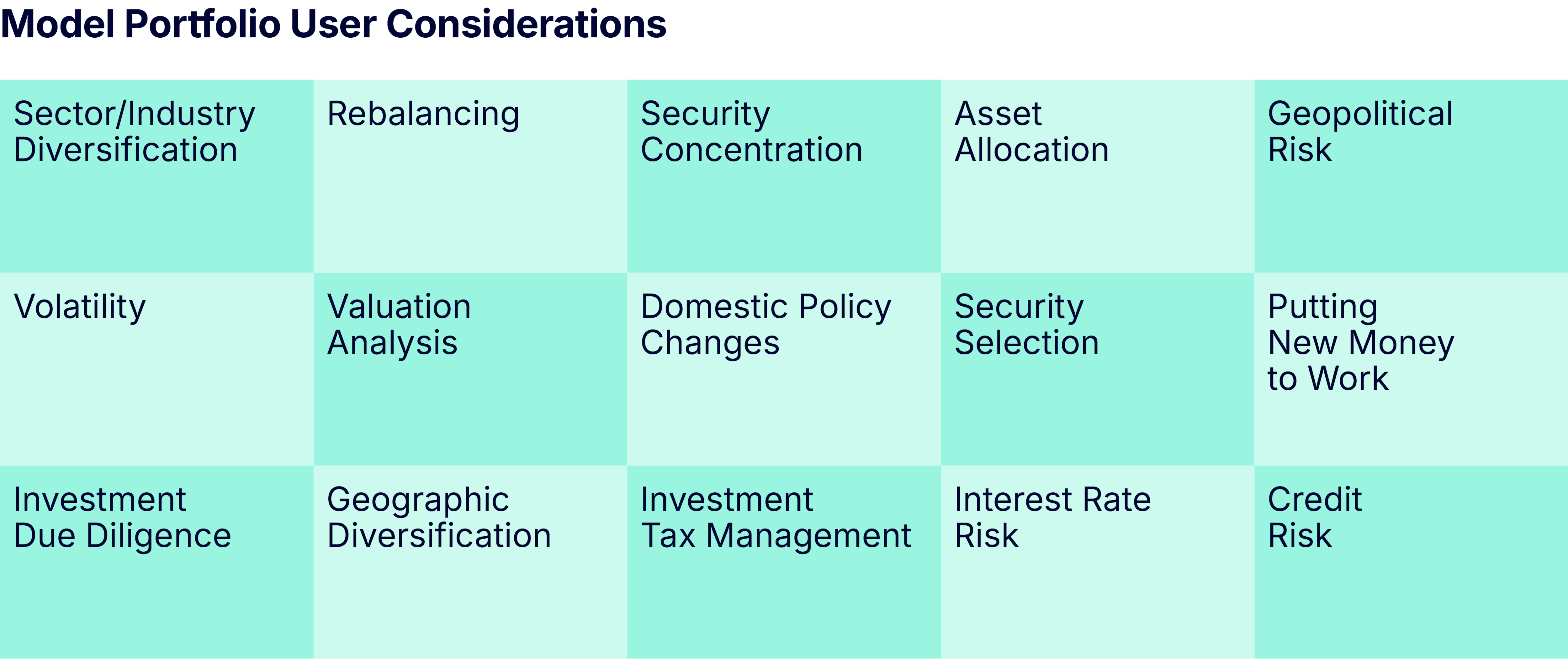What is a model portfolio?
A model portfolio is a collection of assets that can be attributed to an investors portfolio and continually managed by professional investment managers. Model portfolios employ a diversified investment approach to target a particular balance of return and risk or portfolio objective.

There are two main ways to access a model portfolio. Firstly, a Practice can select a fully outsourced approach whereby the model is built and managed by platform providers and third party providers such as institutional investment managers. Alternatively a Practice can adopt a ‘do it yourself’ approach of using their own financial service licence to offer model portfolios.
Regardless of the approach, all model portfolios hold an advantage over traditional unitised investment vehicles because the individual assets are not collectivised and can be directly owned by the clients.
A win for you and your clients
Models are designed to address a variety of investor needs and have the potential to:
- Free up time allowing model portfolio users to save time, and reallocate their energy to cultivate relationships and grow their practice.
- Diversify clients investments in an easy-to-use and easy-to-understand package.
- Reduce investment management costs and taxes when using low-cost, tax-efficient exchange-traded funds (ETFs).
- Benefit from access to institutional investment management with deep asset allocation and research expertise.
- Optimise client tax outcomes with transparency of underlying assets.
- Reduce administrative burden while adhering to regulatory and compliance requirements.
Understanding managed accounts
Typically, Australian investors access model portfolios via managed accounts. Managed accounts is the general term that refers to the type of product or service where the underlying securities can be attributed to the end investor.
Managed accounts can be implemented in different structures, creating flexibility for the model portfolio users. Variations include separately managed accounts (SMAs), managed discretionary accounts (MDAs), unified managed accounts (UMAs) and the more bespoke individually managed accounts (IMAs).
SMA
In simple terms, an SMA is a financial product consisting of underlying financial investments. It is a non-unitised managed investment scheme governed by a constitution and offered under a product disclosure statement. The product issuer is legally responsible for the trading, custody, and account level administration.
MDA
MDA refers to a contractual relationship between an Adviser and client where the Adviser obtains continuous discretion to manage and implement client portfolios. Unlike an SMA, an MDA is classed as a service agreement rather than a financial product, with the planner authorised to provide both advice and discretionary investment management within parameters agreed to by the client.
An MDA licence can be attached to the dealer group’s licence. Advisers can also use a third party’s MDA licence not related to the dealer group, whereby the third party retains all risk in relation to the MDA.
UMA
A UMA is an integrated view of an account that includes multiple investments such as equities, cash, SMAs, ETFs, managed funds and term deposits. Seen as a reporting solution for Advisers, a UMA is reliant upon data feeds and client authorisation to receive all client investment holding data. This one view can support efficient management of a client’s portfolio.
IMA
An IMA is a model portfolio tailored to a specific client’s needs, therefore the portfolio is managed at a client level. Generally this structure is offered under an unregistered scheme with high minimum investment requirements, therefore wholesale investors are the typical investor.